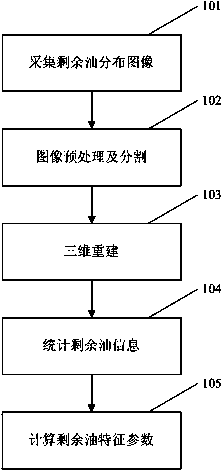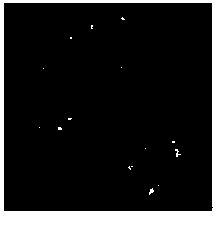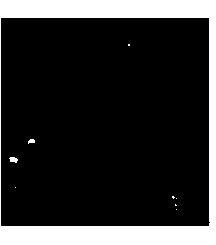Method for collecting and quantitatively characterizing microcosmic distribution images of remaining oil in porous media
A technology of microscopic distribution and porous media, applied in the field of image processing, can solve the problems of poor imaging clarity and inability to reflect the real distribution of remaining oil, and achieve the effect of improving oil recovery
- Summary
- Abstract
- Description
- Claims
- Application Information
AI Technical Summary
Problems solved by technology
Method used
Image
Examples
Embodiment Construction
[0040] In order to make the above and other objects, features and advantages of the present invention more comprehensible, preferred embodiments are listed below and described in detail in conjunction with the accompanying drawings.
[0041] Such as figure 1 as shown, figure 1 It is a flowchart of a specific embodiment of the method for image acquisition and quantitative characterization of the microscopic distribution of remaining oil in porous media according to the present invention. In step 101, an image of remaining oil distribution is collected. In one embodiment, based on tomographic scanning technology, information images of oil-water distribution in porous media at different displacement times are obtained, and this step specifically includes:
[0042] (1) Vacuumize the core model to saturate the water and replace the water with simulated oil, and scan and record the water yield when the core is in the state of irreducible water;
[0043] (2) Inject simulated water...
PUM
 Login to View More
Login to View More Abstract
Description
Claims
Application Information
 Login to View More
Login to View More - R&D
- Intellectual Property
- Life Sciences
- Materials
- Tech Scout
- Unparalleled Data Quality
- Higher Quality Content
- 60% Fewer Hallucinations
Browse by: Latest US Patents, China's latest patents, Technical Efficacy Thesaurus, Application Domain, Technology Topic, Popular Technical Reports.
© 2025 PatSnap. All rights reserved.Legal|Privacy policy|Modern Slavery Act Transparency Statement|Sitemap|About US| Contact US: help@patsnap.com



